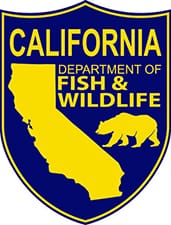

California -(AmmoLand.com)- The Elkhorn Slough OtterCam has been upgraded from standard to high-definition, and there is now a second HD video camera focused on sea otters, thanks to the generous support of the Acacia Foundation and the Public Broadcasting Service (PBS).
Now anyone can watch California’s adorable sea otters in HD by going to www.elkhornslough.org/ottercam. Located in areas of the Elkhorn Slough Reserve’s salt marshes where sea otters often congregate, the two new cameras offer great image clarity and fine detail for viewing this iconic Monterey Bay marine mammal and a teeming cast of other Elkhorn Slough wildlife. Elkhorn Slough Ecological Reserve is managed by the California Department of Fish and Wildlife (CDFW).
The Elkhorn Slough OtterCam HD video streams will be featured as part of the PBS/BBC Big Blue Live television and online event, Aug. 31 through Sept. 2 (at www.pbs.org/big-blue-live/live-cams/elkhorn-slough-otter-cam). Anchored from the Monterey Bay Aquarium, the three-day, live televised event will highlight the amazing marine life that converges off California’s central coast. TheBig Blue Live website links to live cameras, including the Elkhorn Slough OtterCam.
Elkhorn Slough is home to the largest concentration of endangered southern sea otters (enhydra lutris nereis) on the California coast, and the first webcam dedicated to streaming live video of wild southern sea otters in their natural habitat. The Elkhorn Slough OtterCam has been streaming live video online from the tidal salt marshes of the Elkhorn Slough Reserve since 2012. The upgrade to high-definition enhances the OtterCam for both researchers and visitors.
For almost two years, researchers have used the Elkhorn Slough OtterCam to observe sea otter behavior such as foraging, grooming and raising pups. Stationed on the edge of the slough, the camera looks across pickleweed marsh and tidal channels of the slough. These channels are frequented largely by female otters and appear to be used as a nursery, as sea otters with pups are regularly seen in the meandering channels. During the past three years, the camera has provided video and still photographs documenting the growth of otter pups, interactions with harbor seals and other wildlife, and the movement of otters throughout the slough.
“The OtterCam has opened a unique window on the lives of sea otters. There are times we are seeing 25 or more otters in the protected channels of the slough’s marsh,” Elkhorn Slough Foundation (ESF) Executive Director Mark Silberstein said. “This suggests there may be more otters residing in the slough than previously thought. We’ve witnessed some unique behaviors, such as hauling out of the water, resting and grooming in the pickleweed marshes.”
Research is underway to better understand how sea otters are using the estuary, with the hope of helping southern sea otters recover in other parts of their historic range. In turn, recent evidence suggests that sea otters may yield important ecological benefits to the estuaries they inhabit. A study published by reserve researcher Brent Hughes in the Proceedings of the National Academy of Sciencesrevealed that sea otters enhance the health of subtidal seagrass beds, as they do in kelp forests.
“We are pleased to present these remarkable images from the Elkhorn Slough Reserve, and shine a light on sea otter use of the estuary,” Reserve Manager Dave Feliz said. “The behavior of these animals in a salt marsh is little understood, yet the story is unfolding before the eyes of the world on ElkhornSlough.org. CDFW is happy to be a part of this new chapter in sea otter life history.”
Elkhorn Slough, in the central Monterey Bay area, encompasses a wide variety of habitats – oak woodlands, maritime chaparral, coastal prairie and the largest tract of tidal salt marsh in California south of San Francisco Bay – that support an incredible abundance and diversity of life. Elkhorn Slough hosts 550 species of marine invertebrates and 100 species of fish, as well as resident sea lions, harbor seals and the highest concentration of southern sea otters on the West Coast. On the Pacific flyway, Elkhorn Slough bird numbers can soar during migration seasons, nearly doubling the resident bird counts. The slough is designated a Globally Important Bird area, with more than 340 species identified in and around the slough.
ESF is a community-supported non-profit land trust whose mission is to conserve and restore the Elkhorn Slough and its watershed. ESF protects 4,000 acres of rare habitat including oak woodlands, maritime chaparral and wetlands. Since 1982, ESF has been the non-profit partner of the Elkhorn Slough National Estuarine Research Reserve (ESNERR).
ESNERR is managed by CDFW with administrative assistance from the National Oceanic and Atmospheric Administration. ESNERR is one of 28 reserves established nationwide to support long-term research, water-quality monitoring, environmental education and coastal stewardship.
For information about ESF and ESNERR, and to support the conservation of Elkhorn Slough, please visit ElkhornSlough.org and CDFW Elkhorn Slough.
About the California Department of Fish and Wildlife (CDFW):
The California Department of Fish and Wildlife (CDFW) manages California’s diverse fish, wildlife and plant resources, and the habitats upon which they depend.
For more information, visit: www.wildlife.ca.gov.
